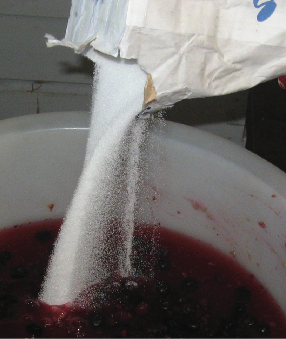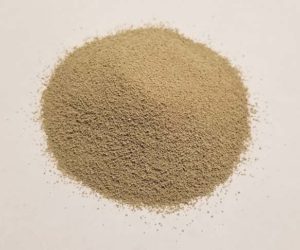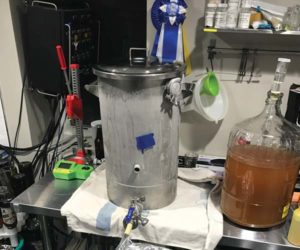Get those Brix up

Chaptalization is the act of adding sugar to juice or must in order to increase alcohol content post-fermentation. It’s a process that is illegal for commercial wineries in many locations, but when making wine with certain types of grapes or country wines, it’s basically required. If you are fortunate enough to live in a place where fully ripened, high-Brix grapes are guaranteed and you have no interest in any other form of wine than wine grapes, then I won’t fault you for moving on to the next article. For everyone else, knowing the why, what, when, and how of chaptalization can be a useful tool.
Why Chaptalize?
The concept is a rather simple . . . more sugar in the must often means higher alcohol wines (at least until the point where the alcohol becomes toxic to the yeast). That is the reason most winemakers add sugar, but there are other reasons to as well. So let’s start with the three primary reasons you may want to add sugar to your wine.
First off, higher alcohol wines are not preferred just because they get people drunk faster . . . but rather because they are more shelf-stable. The elevated ethyl alcohol concentration is lethal to many of wines’ spoilage organisms so the wine can last longer with diminished fears of contamination. The higher alcohol levels are one reason that wine can be safely stored away for months and even years when properly managed.
Another added benefit that can sometimes be overlooked is the fact that ethyl alcohol can also enhance the mouthfeel of a wine. So a boost may be warranted if your juice or grapes come in with low sugar readings. This is also one reason lower alcohol wines are often backsweetened in order to make up for that loss of character from alcohol.
A final reason winemakers may chaptalize their wine is called amelioration — when a overly acidic juice is watered down then sugar is added back to bring the sugar levels back up. You will find this commonly with cold-climate hybrid wine grapes that can come in with titratable acid levels well over 10 g/L, a.k.a., very sour.
When to Chaptalize
It is primarily juice and fresh fruit winemakers who are potentially looking at chaptalization. It is a general rule of thumb that kit wines have already been dialed in to a specific sugar and alcohol level for specific reasons. These decisions have been made for you. But if a kit winemaker insists on chaptalization, be sure to be prudent with additions as the wine can quickly lose balance.
When it comes to preferred sugar levels in the must prior to fermentation, a general threshold for wines that you plan to age for a reasonable amount of time is 22 °Brix. This should lead to a wine with an alcohol level around 12% ABV. A refractometer or hydrometer are two tools winemakers use to read a juice’s sugar level. While there are quite a few examples of commercial wines that fall below to well below this alcohol level (look no further than many of the wines produced in the Mosel region of Germany), enhanced care is needed. In particular, gentler handling and reduced aging capacity are commonly associated with these lower alcohol styles of wine (not to mention the winemaking skills needed to bring overall balance).
Mainly we talk about chaptalizing wine prior to fermentation, but there is no reason that a wine cannot be chaptalized later. In fact, during the Champagne method of producing sparkling wine, it could be said these wines are chaptalized after bottling. A sugar mixture is added (the liqueur de tirage) in order to obtain bubbles in the wine, which also raises the final alcohol level.
General Guidelines
The first guideline has to do with the maximum chaptalization recommended. 25 °Brix is generally what I would say is the maximum a beginner to intermediate winemaker would want to add sugar until. After that, stuck fermentations become increasingly likely and more advanced techniques are required to prevent unbalanced wines and off-flavors from developing.
Next it is important to talk about how much sugar is needed to get you up to your desired alcohol level. Using the Brix scale is extremely easy since it’s just a measure of % sugar. If you have an accurate level of how many liters of juice or wine you have, then for practical purposes we can say 10 g of sugar per liter will add 1 °Brix.
So if you have properly measured your grape juice and find it is 18 °Brix and you want to raise it to 22 °Brix and you have 25 liters, it’s simply the difference in Brix multiplied by 10 g per liter multiplied by the # of liters. In this case you will want to add (4 °Brix x 10 g/L x 25 L = 1000 g, or 1 kg, or 2.2 lbs.) of sugar. While this calculation is a bit simplified, it will get you in the ballpark for our winemaking purposes.
Ways to Chaptalize
The most common way winemakers will chaptalize their wine is with common table sugar found at grocery stores. Make sure you spend a little time working out the math of the amount of sugar required as you may be surprised how much sugar is needed to bring the must up to 22 °Brix for that strawberry wine. A little heat applied to the must prior to the yeast addition will often be beneficial to get the sugar dissolved.
Concentrates, grape or otherwise, are another way that a wine or must can be chaptalized. Most of these come in around 68 °Brix, are often fruit-specific or varietal-specific (although not always), and vary widely in volume. One way to calculate how much to add to get to your target Brix is using Pearson’s Square. You can find instructions on using the Pearson’s Square calculation here: https://winemakermag.com/article/the-pearson-square







